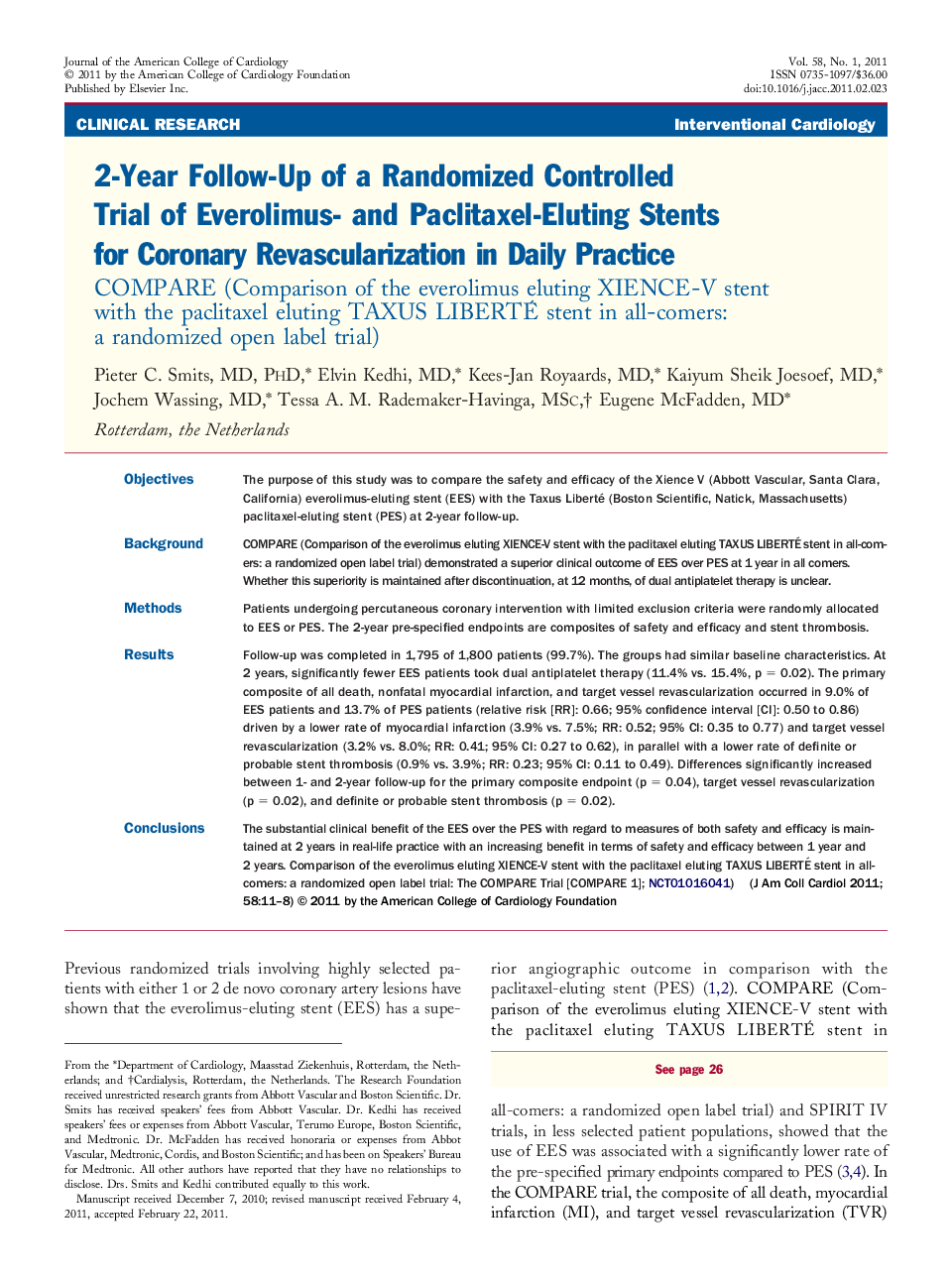| کد مقاله | کد نشریه | سال انتشار | مقاله انگلیسی | نسخه تمام متن |
|---|---|---|---|---|
| 2947839 | 1577258 | 2011 | 8 صفحه PDF | دانلود رایگان |

ObjectivesThe purpose of this study was to compare the safety and efficacy of the Xience V (Abbott Vascular, Santa Clara, California) everolimus-eluting stent (EES) with the Taxus Liberté (Boston Scientific, Natick, Massachusetts) paclitaxel-eluting stent (PES) at 2-year follow-up.BackgroundCOMPARE (Comparison of the everolimus eluting XIENCE-V stent with the paclitaxel eluting TAXUS LIBERTÉ stent in all-comers: a randomized open label trial) demonstrated a superior clinical outcome of EES over PES at 1 year in all comers. Whether this superiority is maintained after discontinuation, at 12 months, of dual antiplatelet therapy is unclear.MethodsPatients undergoing percutaneous coronary intervention with limited exclusion criteria were randomly allocated to EES or PES. The 2-year pre-specified endpoints are composites of safety and efficacy and stent thrombosis.ResultsFollow-up was completed in 1,795 of 1,800 patients (99.7%). The groups had similar baseline characteristics. At 2 years, significantly fewer EES patients took dual antiplatelet therapy (11.4% vs. 15.4%, p = 0.02). The primary composite of all death, nonfatal myocardial infarction, and target vessel revascularization occurred in 9.0% of EES patients and 13.7% of PES patients (relative risk [RR]: 0.66; 95% confidence interval [CI]: 0.50 to 0.86) driven by a lower rate of myocardial infarction (3.9% vs. 7.5%; RR: 0.52; 95% CI: 0.35 to 0.77) and target vessel revascularization (3.2% vs. 8.0%; RR: 0.41; 95% CI: 0.27 to 0.62), in parallel with a lower rate of definite or probable stent thrombosis (0.9% vs. 3.9%; RR: 0.23; 95% CI: 0.11 to 0.49). Differences significantly increased between 1- and 2-year follow-up for the primary composite endpoint (p = 0.04), target vessel revascularization (p = 0.02), and definite or probable stent thrombosis (p = 0.02).ConclusionsThe substantial clinical benefit of the EES over the PES with regard to measures of both safety and efficacy is maintained at 2 years in real-life practice with an increasing benefit in terms of safety and efficacy between 1 year and 2 years. Comparison of the everolimus eluting XIENCE-V stent with the paclitaxel eluting TAXUS LIBERTÉ stent in all-comers: a randomized open label trial: The COMPARE Trial [COMPARE 1]; NCT01016041)
Journal: Journal of the American College of Cardiology - Volume 58, Issue 1, 28 June 2011, Pages 11–18